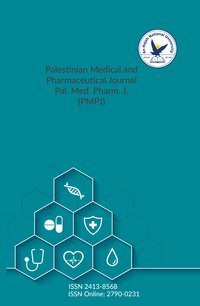Quality Of Life Among Tuberculosis Patients: The Role of Mindfulness
Article info
2024-08-18
2024-09-29
2024-10-04
None - None
Keywords
- of
- Quality
- Life
- Tuberculosis;
- Mindfulness;
Abstract
Background: Tuberculosis is one of the most severe infectious diseases of the twentieth century, resuming everyday living activities and lead to poor quality of life. Mindfulness is believed to improve QOL in various populations, but its unique association with QOL in patients with tuberculosis has yet to be established. Thus, this study aimed to examine the relationship between mindfulness and quality of life among patients with tuberculosis and answered the following research questions” What are the levels of mindfulness and QOL among patients with TB?” “Is there a difference in the QOL based on demographic characteristics and clinical variables among patients with TB?” “Is there a relationship between QOL and mindfulness among patients with TB?” “What are the predictors of QOL among patients with TB?” Method: A descriptive correlational design was used in this study. A convenience sample of 100 adult patients with TB who were in the continuing phase of treatment that underwent treatment at respiratory outpatient clinics at Chest Diseases Unit for TB and from one private agency from various nationalities was selected. Independent sample t-test was used to examine the mean differences in QOL according to the categorical demographic variables with two categories, while one-way ANOVA was used to examine the mean differences in QOL according to the demographic variables with more than two categories. Pearson's correlation, Spearman Rho, and Point biserial correlations were used to determine the relationship between the variables. Simple linear regression was employed to examine the relationship between mindfulness and QOL. Results: The findings showed that the perceived quality of life among patients with TB was high (M=4.22 ±SD = 0.27) and the lowest mean was for physical domain (M=4.0, SD±0.36) and the highest mean was for the social relationship variable (M= 4.41, SD±0. 0.57). There were no statistically significant differences in the levels of QOL according to age (F=1.058, p=0.35) and educational levels (F=0.168, p =0.85). The overall mean for mindfulness was high as well (M= 5.25, SD ±0.27). Furthermore, there was a significant positive correlation between the total score of mindfulness and quality of life. Results demonstrated a significant positive relationship between total MASS score and psychological QOL only (r= 0.211, P ≤ 0.05). The entire model explained 4.5% of the variance in psychological QOL. Conclusion: Providing support to patients with TB through mindfulness is essential to improve their QOL. : The current study provided primary evidence for the relationship mindfulness and QOL among tuberculosis patients. Future research may want to tailor an intervention that combines mindfulness‐based interventions and identify their benefits to support tuberculosis patients.
Quality Of Life Among Tuberculosis Patients: The Role of Mindfulness
معلومات المقال
2024-08-18
2024-09-29
2024-10-04
None - None
الكلمات الإفتتاحية
- of
- Quality
- Life
- Tuberculosis;
- Mindfulness;
الملخص
Background: Tuberculosis is one of the most severe infectious diseases of the twentieth century, resuming everyday living activities and lead to poor quality of life. Mindfulness is believed to improve QOL in various populations, but its unique association with QOL in patients with tuberculosis has yet to be established. Thus, this study aimed to examine the relationship between mindfulness and quality of life among patients with tuberculosis and answered the following research questions” What are the levels of mindfulness and QOL among patients with TB?” “Is there a difference in the QOL based on demographic characteristics and clinical variables among patients with TB?” “Is there a relationship between QOL and mindfulness among patients with TB?” “What are the predictors of QOL among patients with TB?” Method: A descriptive correlational design was used in this study. A convenience sample of 100 adult patients with TB who were in the continuing phase of treatment that underwent treatment at respiratory outpatient clinics at Chest Diseases Unit for TB and from one private agency from various nationalities was selected. Independent sample t-test was used to examine the mean differences in QOL according to the categorical demographic variables with two categories, while one-way ANOVA was used to examine the mean differences in QOL according to the demographic variables with more than two categories. Pearson's correlation, Spearman Rho, and Point biserial correlations were used to determine the relationship between the variables. Simple linear regression was employed to examine the relationship between mindfulness and QOL. Results: The findings showed that the perceived quality of life among patients with TB was high (M=4.22 ±SD = 0.27) and the lowest mean was for physical domain (M=4.0, SD±0.36) and the highest mean was for the social relationship variable (M= 4.41, SD±0. 0.57). There were no statistically significant differences in the levels of QOL according to age (F=1.058, p=0.35) and educational levels (F=0.168, p =0.85). The overall mean for mindfulness was high as well (M= 5.25, SD ±0.27). Furthermore, there was a significant positive correlation between the total score of mindfulness and quality of life. Results demonstrated a significant positive relationship between total MASS score and psychological QOL only (r= 0.211, P ≤ 0.05). The entire model explained 4.5% of the variance in psychological QOL. Conclusion: Providing support to patients with TB through mindfulness is essential to improve their QOL. : The current study provided primary evidence for the relationship mindfulness and QOL among tuberculosis patients. Future research may want to tailor an intervention that combines mindfulness‐based interventions and identify their benefits to support tuberculosis patients.
Why should you
Publish With Us?
An-Najah National University
Nablus, Palestine
Nablus, Palestine
- P.O. Box
- 7, 707
- Fax
- (970)(9)2345982
- Tel.
- (970)(9)2345560
- (970)(9)2345113/5/6/7-Ext. 2628
- [email protected]
- EIC
- Prof. Waleed Sweileh
The Palestinian Medical and Pharmaceutical Journal (Pal. Med. Pharm. J.) © 2024 by An-Najah University, Nablus, Palestine is licensed under CC BY-NC 4.0
